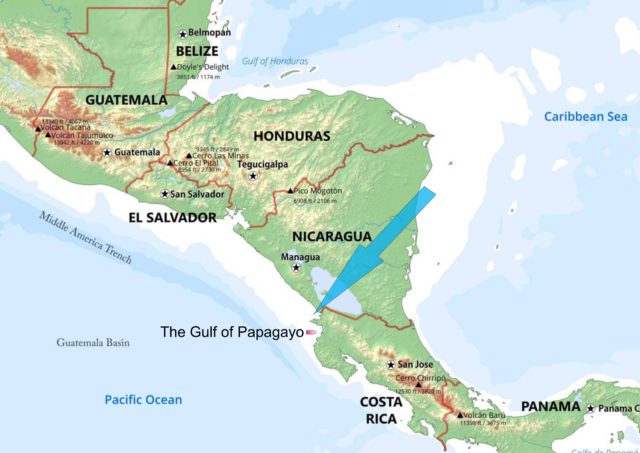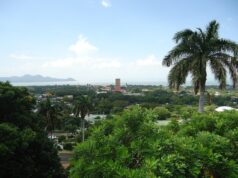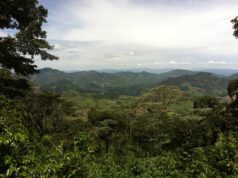Anytime from late December to late March these winds can come and go for a few days at a time, sometimes longer. They can gust for a few seconds at almost hurricane strength and are alternatively referred to as the Papagayo Wind or the Papagayo Wind Jet.
The windy season in Nicaragua has a lot in common with the Snowbirds that visit in a normal year; they start in the colder North America, head south for the first three months of the year and when they are here you know its cold up north!
The Papagayo Jet forms when cold high pressure weather formations, originating from winter weather in North American, are drawn southwards over the Gulf of Mexico and into Central America by the warmer, moist atmosphere over the Pacific Ocean.
On their way south, the winds are funneled through gaps in the Cordillera Mountains, a collective name for the Rockies in the north, the Sierra Nevada’s and the various sections of the Andes Mountains extending through South America.
Like the backbone of the Americas with a few vertebrae missing and these gaps are where the winds flow through. They are; the Isthmus of Tehuantepec (Mexico), the Nicaraguan lowlands (Papagayo) and the Gaillard Cut in Panama.
In Nicaragua, the Papagayo Jet is assisted by the north east trade winds that keep the south moving cold high pressure weather against the higher ground until the gap across the lowland lake creates an exit out and over the Pacific. The area affected is the south east part of Nicaragua and into Costa Rica down to The Gulf of Papagayo, after which the wind pattern was named.
A bi-product of the windy season in Nicaragua is the cloud of “polvo” (fine soil dust) it sends far out into the Pacific. These clouds of dust particles are loaded with nutrients and provide a nourishing feed for a wide range of marine life from algae to the largest of the big game fish as the winds mix with the surface waters of the ocean and the winds chill the water temperature by up to 10 degrees Centigrade.







